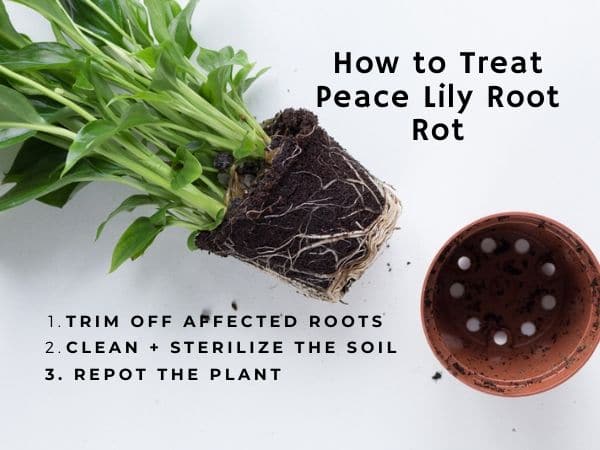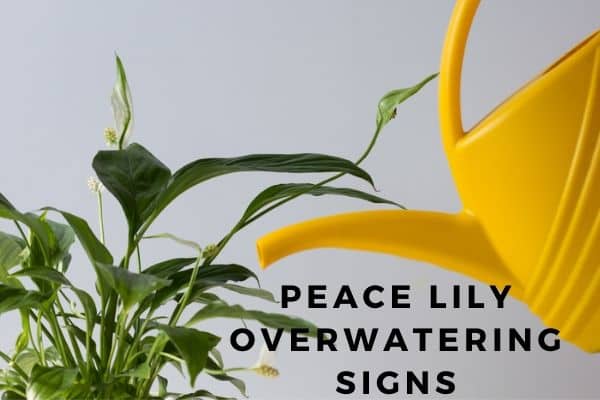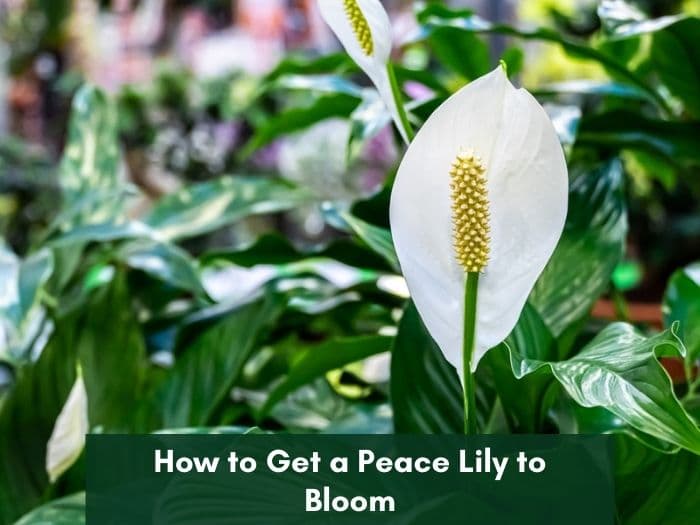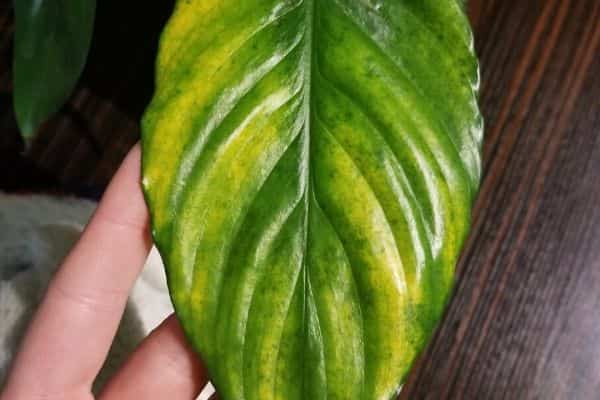Peace Lily Care Indoors and Outdoors – Water, Light & More
| Scientific name | Spathiphyllum spp. |
| Sunlight requirement | Bright indirect light |
| Water | Light watering once a week |
| Soil pH | 5.0 to 6.5 |
| Humidity | About 60% |
| Temperature | 65 to 80°F |
| Soil type | Well-draining, moisture-retaining soil. |
| USDA zones | Zones 11 – 12 |
| Propagation | Division |
| Positioning | East-facing window |
| Size | 1-6 ft tall |
Peace lily (Spathiphyllum sp.) is a common houseplant that produces porcelain-white blooms upon maturity. It is great for beginners and advanced plant moms and dads because it is easy to care for.
I have grown and propagated peace lilies in plant nurseries and homes for years, and on this page, I’ll guide you on growing and caring for a peace lily indoors and outdoors.
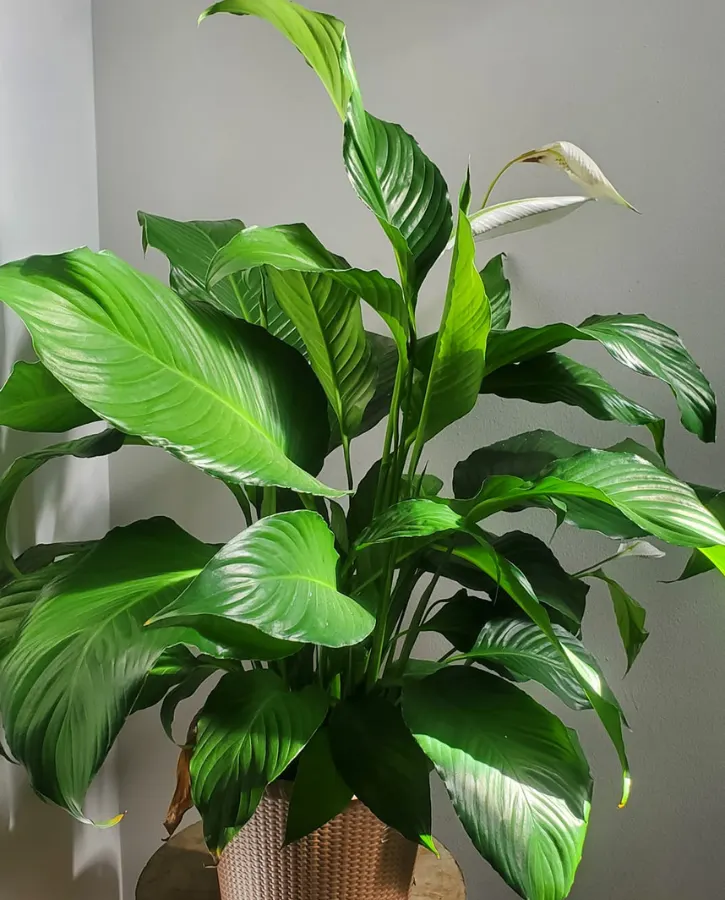
Contents:
Care requirements for peace lily
This plant is low maintenance and can thrive indoors – including in rooms without windows and those that receive very little light. However, it requires proper watering, fertilizer, light, and soil to thrive and bloom.
Here are the care requirements for peace lily plants:
Watering
Peace lilies prefer consistently moist soil, so water the plant only when the soil dries out. Watering once a week is ideal but increase the watering frequency to twice a week in warm weather such as summer.
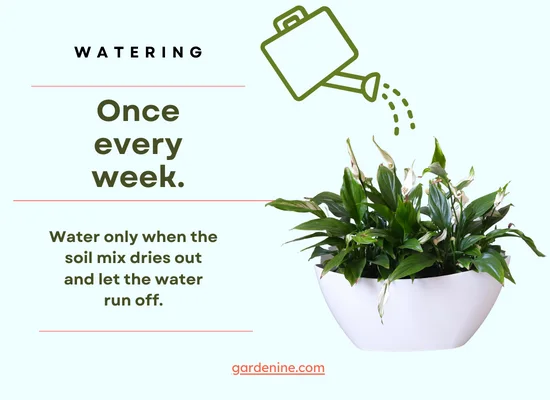
CAUTION: Do not overwater your peace lily, as it does not like sitting in soggy soil. Excess water increases the risk of root rot disease that can kill the plant.
- Keep the soil moist but not soggy, and allow it to dry out between waterings.
- Use distilled water when watering the plant.
- Mist your peace lily twice a week during the warm months to keep it hydrated.
Pro tip: Test the soil moisture every 3 days and let the plant go without water until the soil dries out. You’ll know your peace lily needs to be watered when the foliage starts to droop. At this point, water it well until there’s plenty of runoff.
How to tell a peace lily is underwatered
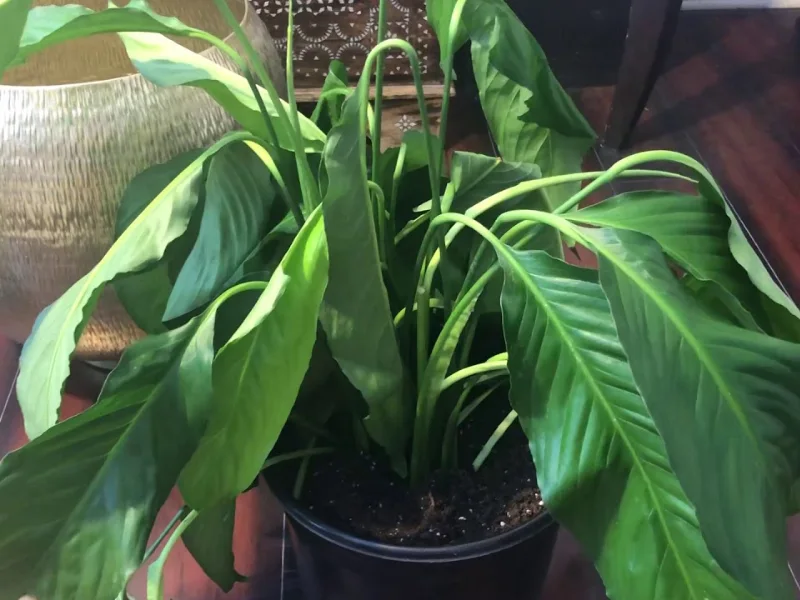
The main signs of underwatering in peace lilies include wilting, drooping, very dry potting mix, and curling leaves. Leaves may also turn from green to yellow to brown if the plant stays without water for a prolonged period.
How to revive a dehydrated peace lily
Follow these steps to save your underwatered peace lily plant.
Here’s how to rehydrate a thirsty peace lily:
- Fill a bowl or sink with lukewarm distilled water (Peace lilies don’t do well with tap water as it contains fluoride and other contaminants.)
- Place the plants pot in the bowl so the soil can absorb the water through drainage holes.
- Allow the plant 10 minutes to soak up water.
- Remove the pot from the water and let it drain out excess water.
- The drooping leaves should revive after a few days.
- After 2-3 days, your plant should recover its green foliage.
Pro tip: Mist your peace lily often during warm months to improve the humidity around them. Peace lilies enjoy high humidity, so place the pot near the bathroom or set the pot on top of a moistened gravel tray to offer high humidity around the plant.
Sunlight
Peace lilies prefer bright indirect light but can tolerate low light conditions. The plant requires at least 6 hours of sunlight to thrive, so place it near an east-facing window when growing it indoors. You can also place your peace lily in a dark room or corner in your house.

You’ll know a peace lily is not getting enough light if it develops yellow leaves. Too much sunlight will cause the leaves to turn yellow and brown, starting at the tips.
Pro tip: Your peace lily will not bloom if it doesn’t get enough sunlight. Therefore, to encourage flowering, place the plant where it will receive bright indirect light devoid of cold drafts.
Humidity
Peace lilies thrive in at least 60% humidity. You’ll notice drooping, wilting, and brown leaf tips in dry air conditions.
Most households have a humidity range of 40-50%, which is okay for your peace lily. However, I recommend you put a humidifier near your peace lily to keep it hydrated.
Alternatively, make a DIY humidifier for your plant by placing a wide saucer underneath the pot and filling it with pebbles and a little water. This should improve the humidity in the room.
Soil type and pH
Peace lilies like to grow in well-draining soil that retains moisture. I recommend using soil mix with texture to allow excess water in the container to drain easily. You can prepare your own soil mixture using loam, coir, perlite, or peat moss.
Maintain a soil pH range of 5.0 to 6.5 for peace lilies to allow them to draw nutrients and grow green. The plant will show signs of chlorosis and stunted growth if the pH is problematic.
Temperature
Maintain an ideal temperature of 65 to 80°F when growing your peace lily indoors.
Winter care tips
Here are some care tips for your peace lily during winter:
- Move the plant indoors as it cannot tolerate temperatures below 40 °F.
- Keep the peace lily away from cold drafts.
- Avoid using heaters near the plant.
- Do not give the plant fertilizer in winter.
Blooms
When growing outdoors, peace lilies bloom in spring, producing showy white flowers. However, those growing indoors may bloom at different times due to varying environmental conditions and care practices.
Give your peace lily with an organic fertilizer to encourage it to bloom. Be careful not to overfeed the plant because it is sensitive to chemical changes in the root zone and will readily droop if you give it too much fertilizer.
Pro tip: Spathyphillums rarely bloom indoors, especially when growing in low light conditions. If it’s been a few years before yours flowered, prune the peace lily and move it to a spot where it will receive bright indirect sunlight and maintain a meticulous care practice for the plant.
Common problems
If it is your first time growing a peace lily, you want to watch out for some common problems so you know what they indicate.
Here are some common peace lily problems and how to fix them.
- Yellowing leaves: Overwatering, root rot disease, and insufficient light are the main causes of yellowing foliage. Old leaves also turn yellow and should not be a reason to worry. Check this guide on diagnosing yellow peace lily leaves.
- Brown tips: Browning often starts at the leaf edges and indicates low humidity, overexposure to sunlight, and/or underwatering. Ensure the soil is moist, and then move the plant to a spot with indirect light. Here’s more on fixing brown peace lily leaves.
- Drooping and wilting: I’ve found peace lilies to be sensitive to light and water conditions. The plant will readily droop or wilt when it doesn’t get enough water – or even when it is overwatered. If yours is wilting, check that it is properly watered and that it is not suffering from root rot disease.
- Root rot: Phytophthora fungi thrive in soggy soil and cause damage to the roots. As the disease progresses, the plant will exhibit leaf chlorosis (yellowing), root die-back, and drooping. Read how to treat root rot disease in peace lilies here.
FAQ
How often should I water my peace lily?
It is recommended to water your peace lily once a week but check first to make sure the soil is drying out. Keep the soil moist rather than wet. Also, spritz the leaves once or twice a week to help the plant remain hydrated.
Where should I place my peace lily indoors?
Place your peace lily near an east-facing window for it to receive at least 6 hours of indirect light daily. You can also place it near a north-facing window but move it a little farther away from the window to prevent overexposure to sunlight.
Where should I place my peace lily outdoors?
Place your peace lilies under a shaded spot outdoors because the plant cannot tolerate direct sunlight. Put it on the porch or shaded patio. However, if you are growing them outdoors, ensure you’re in the U.S.D.A plant hardiness zones 11 and 12.



